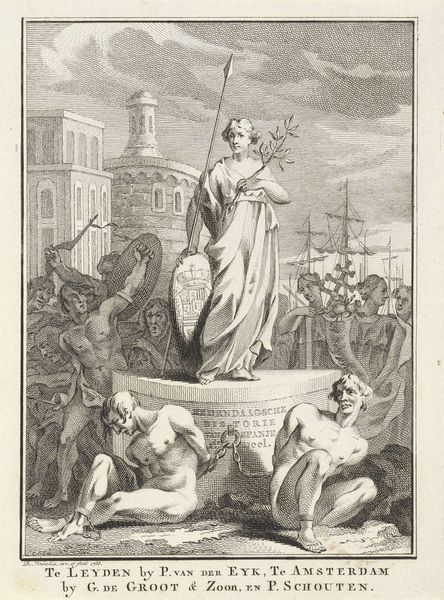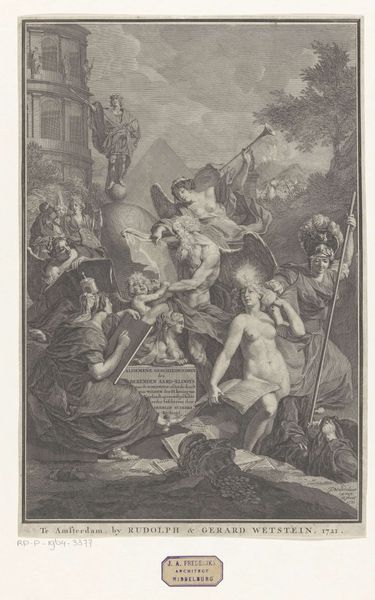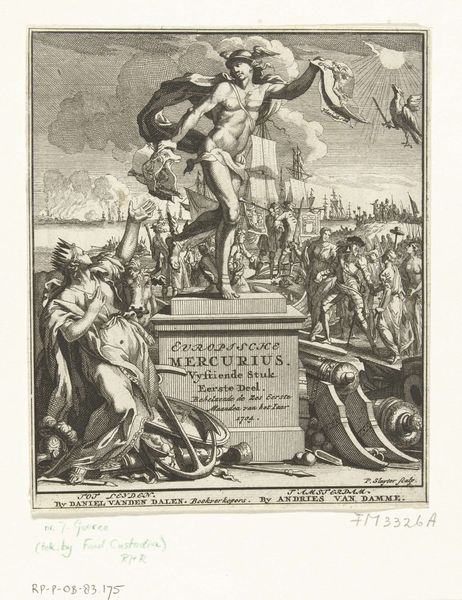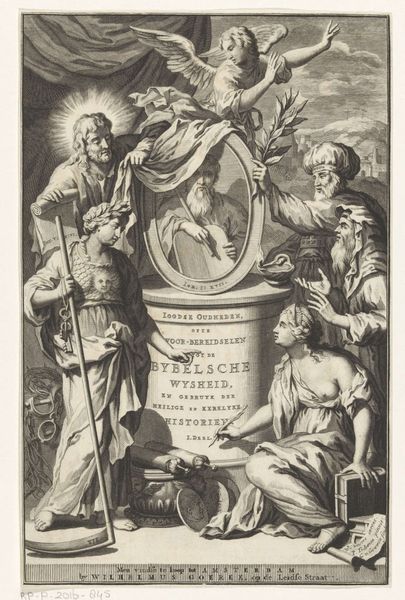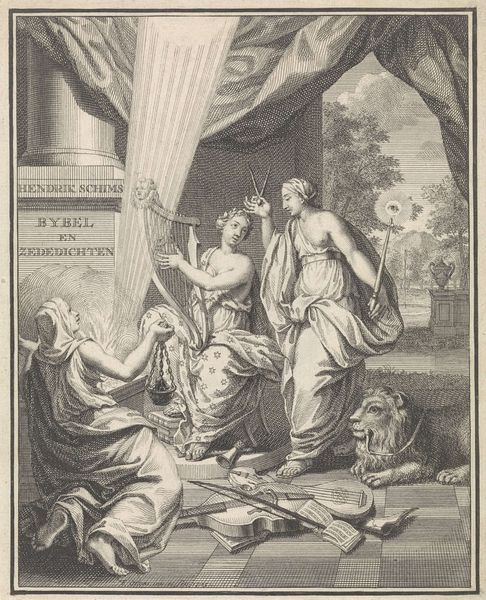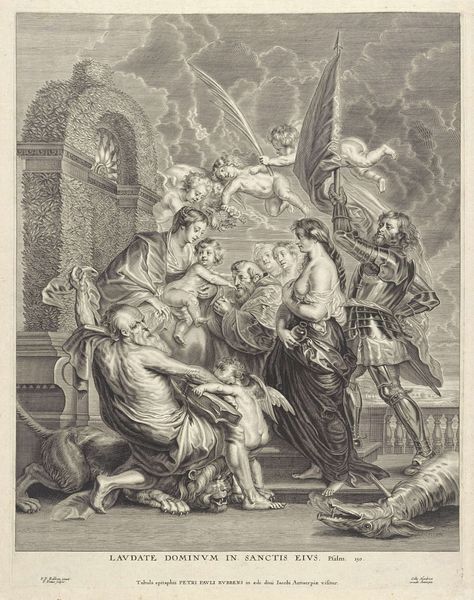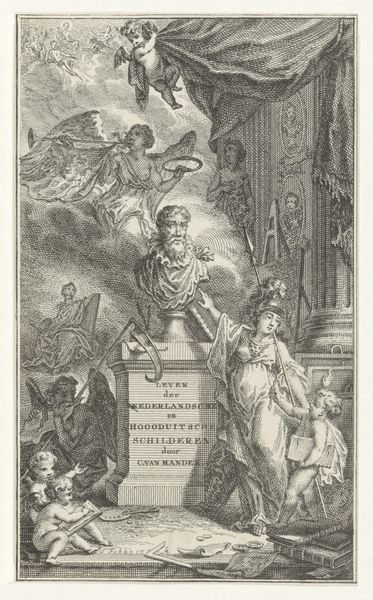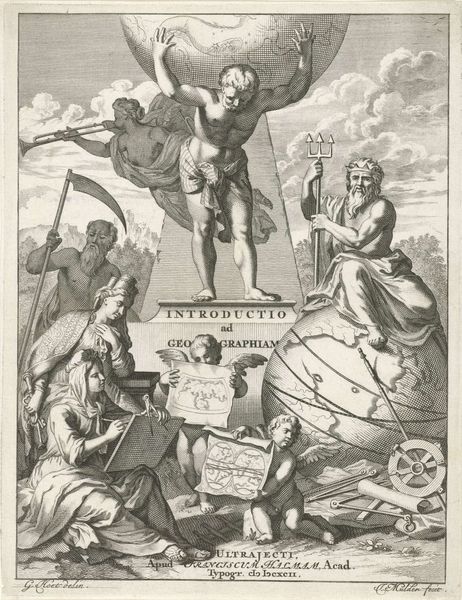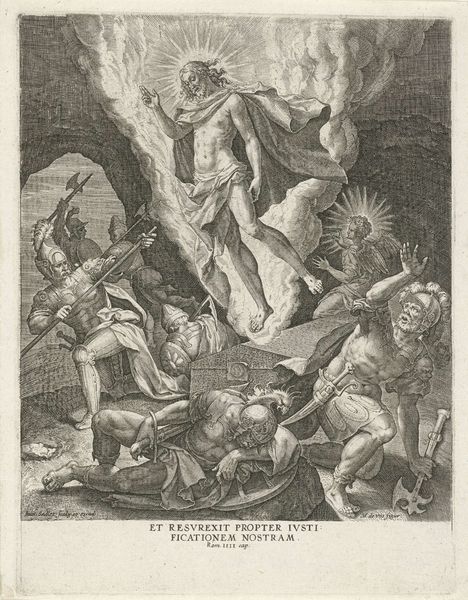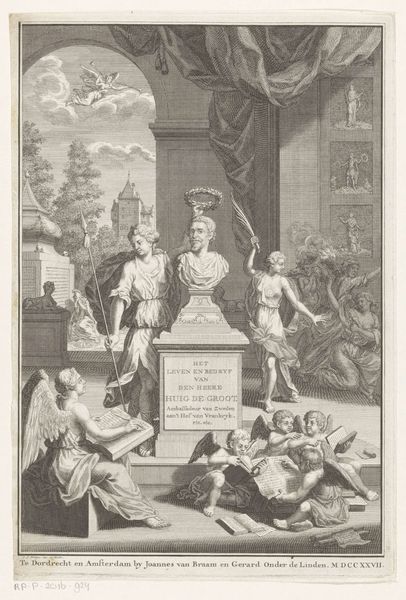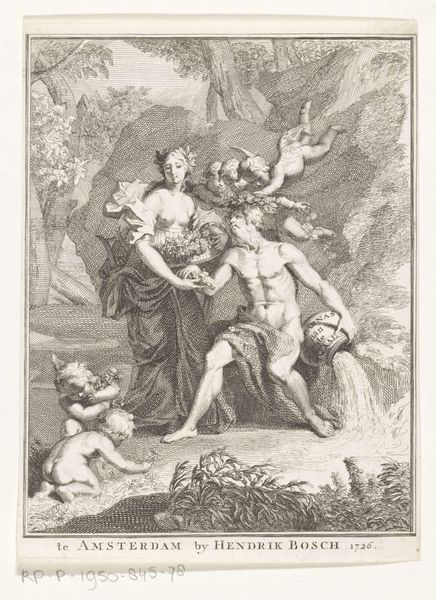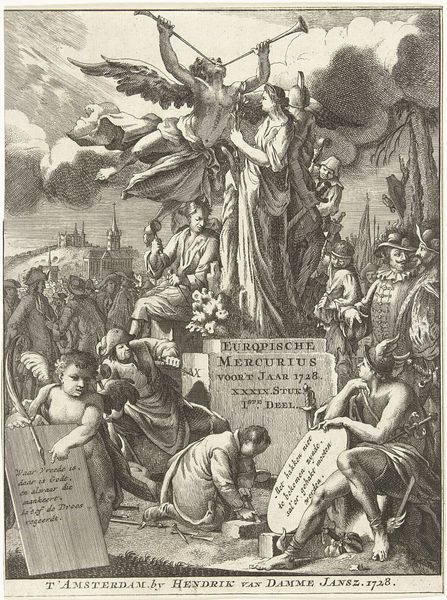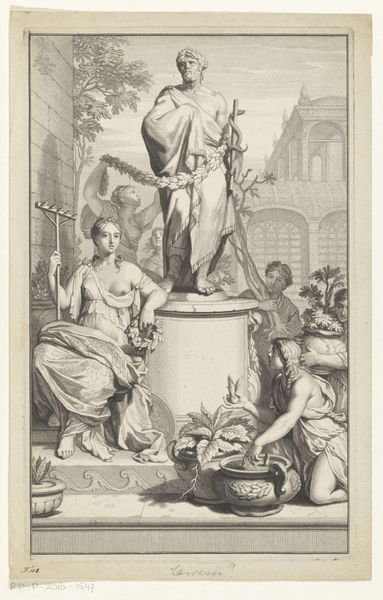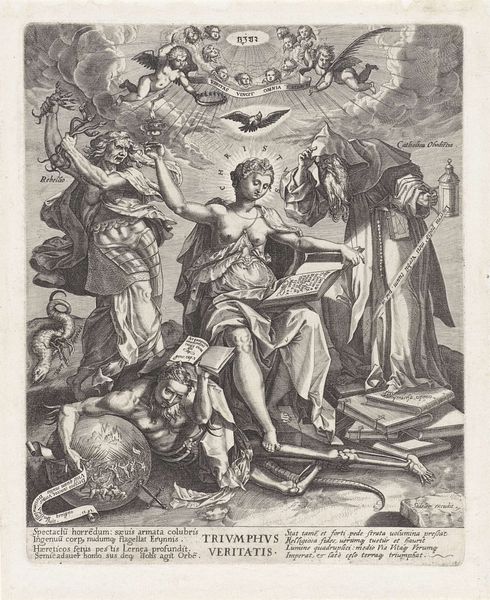
print, engraving
#
allegory
#
baroque
# print
#
figuration
#
line
#
history-painting
#
engraving
Dimensions: height 160 mm, width 137 mm
Copyright: Rijks Museum: Open Domain
Jan Ruyter created this title page for the Europische Mercurius of 1731 as an etching. The Europische Mercurius was one of the most important Dutch periodicals of the 18th century, offering a window into the political and cultural happenings across Europe. Consider the central figure, Mercury, the Roman god of commerce, communication, and travel. He stands as a symbol of the era's burgeoning trade networks and the rapid dissemination of news. To the left and right, female figures represent abundance and peace, reflecting the era's aspirations for prosperity and stability. The inclusion of portraits and Latin inscriptions suggests an appeal to an educated elite, deeply immersed in classical traditions. But, how might ordinary people have encountered and interpreted these symbols? Did these images inspire or alienate them? How did they participate in the political and social dialogues of the time? By examining the Europische Mercurius through a contemporary lens, we can gain a deeper understanding of how images shaped public opinion and contributed to the formation of identity.
Comments
No comments
Be the first to comment and join the conversation on the ultimate creative platform.
